
Professor of Political Science, UCLA, he/him/his

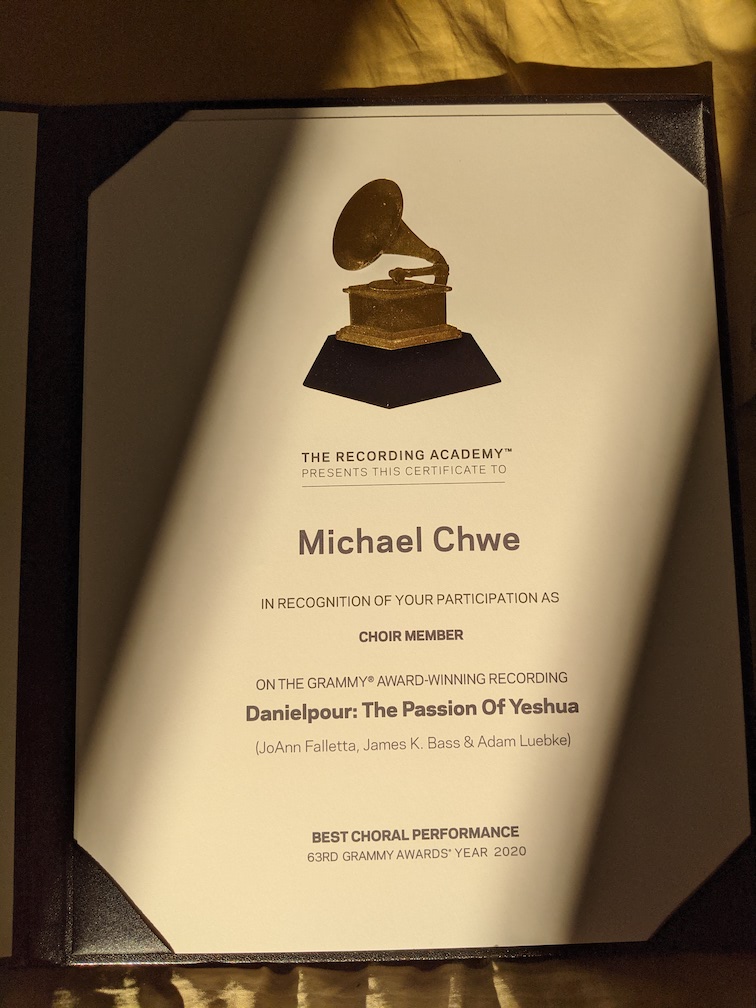
Choir Member, UCLA Chamber Singers, Grammy Award-Winning Recording, Best Choral Performance, 2020.
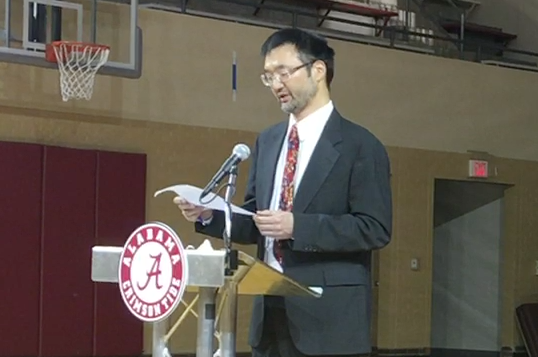
Lecture on the film Clueless for the Science on Screen event, Coolidge Corner Theatre, Boston, March 24, 2021.

Co-authored with Francesca R. Jensenius, Mala Htun, David J. Samuels, David A. Singer, and Adria Lawrence. Google Scholar has biases that disadvantage women, younger scholars, scholars in smaller research communities, and scholars opting for risky and innovative work. It is imperative that political scientists incorporate other data sources, especially independent scholarly judgment, when making decisions that are crucial for careers. PS: Political Science and Politics 51: 820–824.
Co-authored with Ian Ayres and Jessica Ladd. In this paper, we explain how drawing naive conclusions from “act sampling”—sampling people’s actions instead of sampling the population—can make us grossly underestimate the proportion of repeat actors. We call this “act-sampling bias.” This bias is especially severe when the sample of known acts is small, as in sexual assault, which is among the least likely of crimes to be reported. Virginia Law Review Online 94.
The widget for this paper, written in Javascript using D3.js, is available here.

Co-authored with Elizabeth Levy Paluck. To stop hate crimes, we must understand why perpetrators do what they do: the personal and social sources of their motivation. Research shows that potential perpetrators of hate crimes and bullying are actually quite conscious of the degree to which their community supports or condemns their actions. PS: Political Science and Politics 50: 990–992.
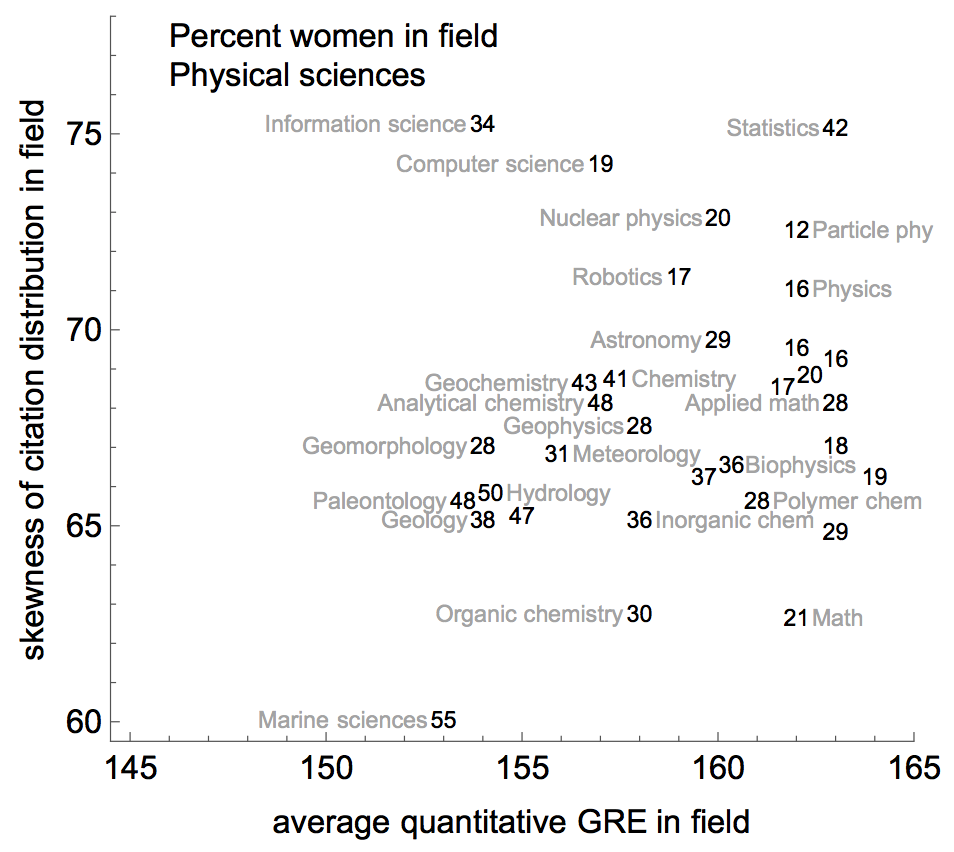
I find that among 119 academic fields, the more skewed the citation distribution of papers published in the field, the lower the percentage of doctoral recipients who are women. If the citation distribution in a field is more skewed, a smaller percentage of papers receive most of the citations, which indicates a greater preference to agree on which papers should be cited. This empirical result illustrates the argument, which I make in a game-theoretic model, that stereotypes are more powerful when people like to agree with each other.
The data used in this paper is available here.
This music video is based on political demonstrations in Los Angeles from November 2016 to March 2017.
The Beliefs of Economist James Buchanan Conflict With Basic Democratic Norms (2017). Washington Post.
Stop Playing Defense on Hate Crimes (2016). Time Magazine.
Can Democracy Be Saved By Those Who Have Been Historically Excluded? (2016). Princeton University Press Election 2016 blog.
Why Facebook is a Lot Like Listerine (2015). Harvard Business Review.
Mark Zuckerberg Wants People to Understand Common Knowledge. What’s Common Knowledge? (2015). Washington Post.
Scientific Pride and Prejudice (2014). New York Times.
How Economic Theory Can Help Stop Sexual Assault (2014). PBS NewsHour.
Game Theorist on Shutdown: “It’s Not Brinkmanship” (2013). Time Magazine.
Gaming Mr. Darcy: What Jane Austen Teaches Us About Economics (2013). PBS NewsHour.
Amanda Taub. 2019. #MeToo Paradox: Movement Topples the Powerful, Not the Ordinary. New York Times.
Stacey Vanek Smith and Cardiff Garcia. 2018. Economists On Screen, Episode 1: Crazy Rich Asians. Planet Money podcast.
Richard Feloni. 2015. Mark Zuckerberg Hopes This Book Will Help Shape His Vision for Facebook. Business Insider.
John Cassidy. 2013. Is It Rational to Watch the Oscars? The New Yorker.
Andrew Romano. 2012. Why the Republican Party Needs Debates. Newsweek.
Virginia Postrel. 2002. Communal Activities, From Weddings to Football, Add Value to Shared Knowledge. New York Times.
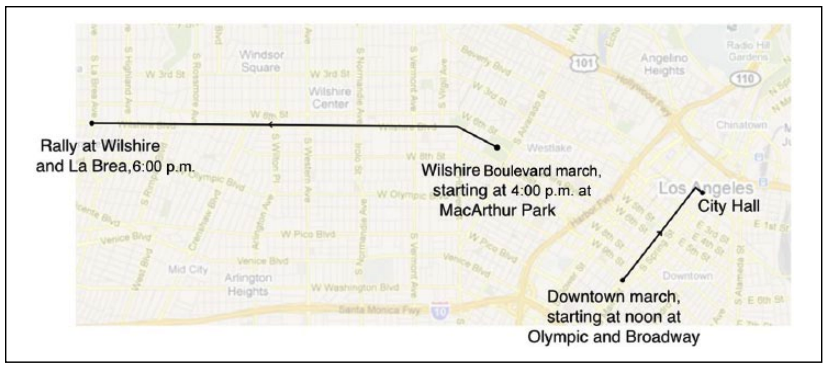
Co-authored with Kim Yi Dionne, Darin DeWitt, and Michael Stone. We study protest participants in the May 2006 immigration rights marches in Los Angeles. Analysis of original survey data of 876 march participants yields five main results. First, despite substantial dispute among organizers on how to frame the marches, we find protest participants were similar across march locations organized by different coalitions. Second, we find Spanish-English bilingual participants seemed to benefit from being in two media environments, as they reported more information sources about the protest events than monolingual participants. Third, women reported hearing about the protest events from more information sources, and Spanish-English bilingual women reported hearing from more information sources than any other group, suggesting they acted as social connectors behind the massive participation. Fourth, we confirm the importance of Spanish-language radio as an information source, but our data also point to the significance of television and English-language radio. Finally, analyzing data of first-time protesters, we estimate the immigrant rights marches newly politicized 125,000 people in Los Angeles who spoke Spanish and not English. Urban Affairs Review 51 (2015): 533–562.
Game theory—the study of how people make choices while interacting with others—is one of the most popular technical approaches in social science today. But as Michael Chwe reveals in his insightful new book, Jane Austen explored game theory’s core ideas in her six novels roughly two hundred years ago. Jane Austen, Game Theorist shows how this beloved writer theorized choice and preferences, prized strategic thinking, argued that jointly strategizing with a partner is the surest foundation for intimacy, and analyzed why superiors are often strategically clueless about inferiors. With a diverse range of literature and folktales, this book illustrates the wide relevance of game theory and how, fundamentally, we are all strategic thinkers.
Although game theory’s mathematical development began in the Cold War 1950s, Chwe finds that game theory has earlier subversive historical roots in Austen’s novels and in “folk game theory” traditions, including African-American folktales. Chwe makes the case that these literary forebears are game theory’s true scientific predecessors. He considers how Austen in particular analyzed “cluelessness”—the conspicuous absence of strategic thinking-and how her sharp observations apply to a variety of situations, including U.S. military blunders in Iraq and Vietnam. Jane Austen, Game Theorist brings together the study of literature and social science in an original and surprising way. Princeton University Press.
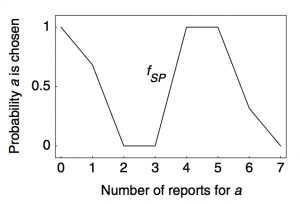
In Condorcet’s model of information aggregation, a group of people decides among two alternatives a and b, with each person getting an independent bit of evidence about which alternative is objectively superior. I consider anonymous procedures, in which the group’s decision depends only on the number of people who report a or b, not their identities. A procedure is called incentive compatible for a person if she wants to report truthfully given that others report truthfully. I show that if an anonymous procedure is incentive compatible for both a person who is significantly biased toward a and a person who is significantly biased toward b, then it is incentive compatible for any person, regardless of his preferences and prior beliefs; also, if it is not trivial, it must be nonmonotonic, with an additional report for a sometimes decreasing the probability the group chooses a. I define the “supermajority penalty” (SP) procedure and show that when there are significant biases in both directions, the SP procedure is the optimal anonymous incentive compatible procedure from the point of view of an unbiased person. Quarterly Journal of Political Science (2010) 5: 45–70.
I compare Beatrice and Benedick in William Shakespeare’s Much Ado About Nothing with Richard and Harrison in Richard Wright’s Black Boy. I use this comparison to introduce the reader to game theory and to address some common criticisms, for example that rational choice theory assumes selfish and market-oriented individuals. I then look at some trickster folktales from the African-American tradition, such as the well-known Brer Rabbit and the Tar Baby tale, and argue that these folktales can be understood as early primers in game-theoretic reasoning, long before game theory took mathematical shape in the 1950s. I discuss some common misperceptions which come up in controversies over rational choice theory and how game theory and the humanities might interestingly interact. Occasion: Interdisciplinary Studies in the Humanities (2009).
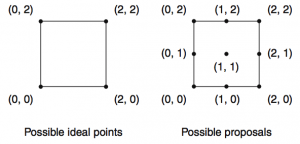
This paper uses a game-theoretic model to show that the issue of social construction can in some form arise even in the stark conceptual world of completely rational and asocialized actors. The paper suggests that it is possible that there are “hidden” issues, dimensions of political activity which can be politicized but are not because no individual wants to politicize them. People have diverse preferences on these issues, but they play no role in political expression or decision making, and in fact are not visible to the outside observer. Individuals here do not “keep quiet” out of social conditioning, conformity, or an inability to conceive of a different political reality, but because they are well aware that politicizing new issues has potentially risky real effects. People who do try to expand the domain of political activity are people whom the currently understood dimensions of political activity place in a minority. To create a new majority on a new dimension, it is not a matter of changing people’s preferences but of creating “class consciousness,” so that people know that others feel the same way they do. The preferences which people use when voting, and their identity as majority or minority, are determined by constraints in people’s knowledge of each other. These constraints are not exogenous but actively and rationally constructed by people through communication. International Journal of Game Theory (2007) 35: 205–221.
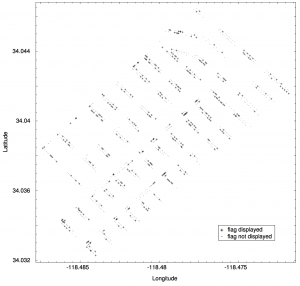
When a person’s payoff depends on both her action and probabilistic events, the action she chooses and her payoff can be understood as random variables. This paper shows that incentive compatibility implies that when a person chooses among two actions, conditional on these two actions, her action is nonnegatively correlated with the payoff difference between the two actions. This simple and robust result has implications in a wide variety of contexts, including individual choice under uncertainty, strategic form games, and incomplete information games. Incentive compatibility constraints have an immediate “statistical” interpretation.
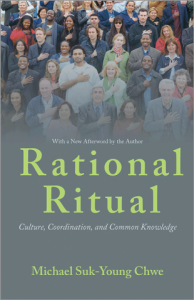
How do political ceremonies help establish authority? How can a public declaration have political consequences even when it says something that everyone already knows? Why do ritual songs and speech typically involve lots of repetition? Why were circular forms considered ideal for public festivals during the French revolution? Why was the advertising during the Barbara Walters television interview of Monica Lewinsky dominated by Internet companies? Why are advertisers willing to pay more per viewer to buy commercial time on the most popular television programs? Why are close friendships important for collective action even though people typically “reach” many more people through casual acquaintances? How is the “panopticon” prison design also a ritual structure? In what sense is everyone separately reading their own copy of the morning newspaper a ritual? How is historical experience a resource for collective action? How do rituals and media events help create social identity? This book (essentially a more in-depth version of the “Culture, Circles, and Commercials” paper below) tries to answer these and other questions with a single argument, trying to find a common thread among a variety of cultural and social practices usually thought disparate. Princeton University Press.
The television advertising data used in this book is available here.

This is a photocollage that I took in March 2001 in Salt Lake City, on a street near my daughter’s preschool.
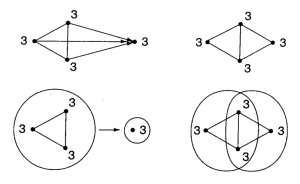
Here people playing a general coordination game use a communication network to let each other know their willingness to participate. We obtain an exact characterization of which networks make coordination possible: we define a “minimal dependence network” of a coordination game, and show that coordination is possible if and only if the communication network contains a minimal dependence network. Coordination games can be understood as placing people into a hierarchy of social roles or “stages”: “initial adopters,” then “followers,” and so on down to “late adopters.” We show that a communication network helps coordination in exactly two ways: by informing each stage about earlier stages, and by creating common knowledge within each stage. We then consider two examples: first we show that “low dimensional” networks can be better for coordination even though they have far fewer links than “high dimensional” networks; second we show that wide dispersion of “insurgents,” people predisposed toward participation, can be good for coordination but too much dispersion can be bad. (Figure 3 in this paper has an error, as explained by Kris de Jaegher, to whom I am indebted.) Review of Economic Studies (2000) 67: 1–16.
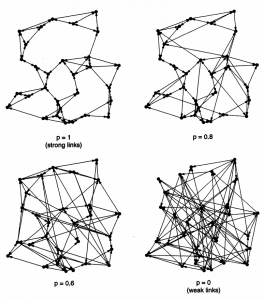
This paper considers both structural and strategic influences on collective action. Each person in a group wants to participate only if the total number participating is at least her threshold; people use a social network to communicate their thresholds. People are strategically rational in that they are completely rational and also take into account that others are completely rational. In several examples, I show that strategic rationality itself has structural implications otherwise not discernible. Results include: cliques form the common knowledge crucial for collective action; dispersion of “insurgents,” people strongly predisposed toward collective action, can be good for collective action but too much dispersion can be bad; classic “bandwagon” models overstate the fragility of collective action. American Journal of Sociology 105 (1999): 128–156.
The Mathematica program which is used to compute the examples in this paper is available here.
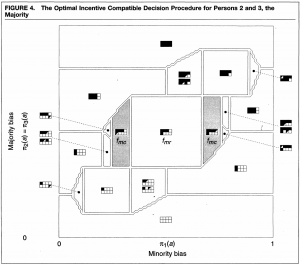
Recently, Lani Guinier argues against majority rule on fairness grounds, both abstractly and in the specific context of the representation of people of color in the United States. Since a majority can always get its way, a minority has little power and might not even participate in elections. Guinier suggests instead procedures which might distribute power more evenly, including “taking turns,” in which the majority gets to decide more often, but the minority gets to decide at least some of the time. Two centuries earlier, however, Condorcet argued for majority rule on the basis of efficient information aggregation: if each individual has an equal chance of having the correct opinion, then majority rule is most likely to select the better of two alternatives.
This paper takes Condorcet’s information aggregation model and adds voter heterogeneity: each voter has an idiosyncratic prior belief or preference which is the objectively better alternative. The main result is that given some prior beliefs, the best possible decision procedure for the majority involves taking turns, in the sense that with some probability the minority gets to decide even when outvoted by the majority. In other words, even the welfare criterion most favorable for the majority sometimes requires “special” minority voting power. American Political Science Review (1999) 93: 85–97.

This paper presents a simple two person auction model in which a seller and buyer make bids in units of money; however, the value of a unit of money, the rate at which money is redeemed into utility, is uncertain. The model is flexible enough so that beliefs and the kind of incomplete information can be specified freely, as if they were policy variables rather than structural features of the economy.
I show that money is neutral if and only if its value is common knowledge in the game theoretic sense: everyone knows what the value of a unit of money is, everyone knows that everyone knows, and so on. In other words, the informational requirements for neutrality are very strong: a monetary revaluation can have real effects even if everyone knows about it, for example. I show that if the seller and buyer have different prior beliefs, then monetary policy can improve total gains from trade, measured objectively. I also find an “optimal” level of inflation which captures the intuition that low levels of inflation encourage trade but high levels render money useless in trade. Journal of Economic Theory 87 (1999): 49–71.
This paper applies a game theoretic argument, that common knowledge is necessary for “solving” coordination problems, to a variety of cultural practices. This argument helps in understanding how cultural practices such as mass ceremonies constitute power, how talking in inward-facing circles helps coordination, and why “social” goods tend to be advertised on popular and expensive television shows. The main conclusion is that cultural practices, usually understood in terms of “meaning” or “content,” must also be understood in terms of “publicity,” or more precisely common knowledge generation. Rationality and Society (1998) 10: 47–75.
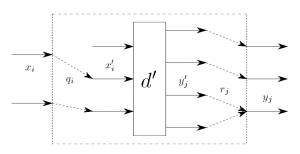
This paper offers a game theoretic analysis of how an organization’s choice of network depends both on the available communications technology and the underlying strategic situation the organization faces. The paper develops a notation for modelling communication devices and looks at the choice of optimal network in three “coordinated attack” examples.

I define the largest consistent set, a solution concept which applies to situations in which coalitions freely form but cannot make binding contracts, act publicly, and are fully “farsighted” in that a coalition considers the possibility that, once it acts, another coalition might react, a third coalition might in turn react, and so on, without limit. I establish weak nonemptiness conditions and apply it to strategic and coalitional form games and majority rule voting. I argue that it improves on the von Neumann-Morgenstern stable set as it is usually defined but is consistent with a generalization of the stable set as in the theory of social situations. Journal of Economic Theory (1994) 63: 299–325.
The Mathematica program which computes the largest consistent set is available here.

Violence, which seems inherently irrational, and economics, which calls itself the study of rational behavior, seem altogether unrelated. But violence is often used in incentives—one reason a person threatens to hurt another is to get that person to do something. This paper uses a model to show that threatening pain can be rational and that pain is inflicted on people who are poor in the sense of having bad alternatives. The model corrects a confusion in previous models of slavery and helps explain why child and not adult labourers were beaten during the British industrial revolution. Economic Journal (1990) 100: 1109–1121.
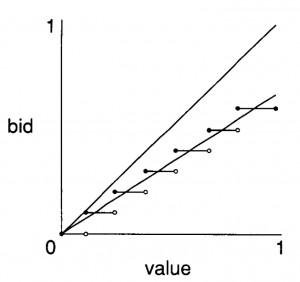
In a first price auction in which buyers can bid only multiples of an increment and have uniformly distributed values, the expected price is less than the continuous bid price. Economics Letters (1989) 31: 303–306.
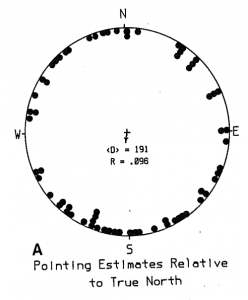
Co-authored with Joseph L. Kirschvink, Karla A. Peterson, Paul Filmer, and Brenda Roder. Replicating an experiment by Baker, we do not find evidence that humans have a magnetic compass sense. In Magnetite Biomineralization and Magnetoreception in Organisms: A New Biomagnetism, edited by Joseph L. Kirschvink, Douglas S. Jones, and Bruce J. McFadden (1985).
In 1981, I made a slideshow illustrating May Swenson’s poem Southbound on the Freeway.
michael@chwe.net
UCLA Political Science Department, 4289 Bunche Hall, Los Angeles, CA 90095-1472
(310) 825-0778 fax
When I was thinking about writing my first book, Peter Dougherty of Princeton University Press very kindly gave me some sample book proposals. Here are my book proposals in case you find them helpful when submitting your manuscript to a publisher. The first, for Rational Ritual, was written before I had finished the draft of the manuscript, and hence is fairly long. The second, for Folk Game Theory (which became Jane Austen, Game Theorist), accompanied the first draft of a completed manuscript, and hence is shorter.